“Jesus, how much longer is this?” I texted my friend, putting down the PlayStation 4 controller to pause Transistor. “I think I’m just bad at video games,” I added. “About 5 hours maybe,” he wrote back, laughing in the way that one makes clear through a text message. He had finished the whole thing in that amount of time.
I wasn’t writing him because I was unhappy playing Transistor, the long-awaited second act from Bastioncreator Supergiant Games. If anything, I was texting him because I was enjoying it too much.
I usually play video games slowly. But even by my molasses-like standards, I could tell I was advancing through Transistor at a sluggish pace — seeking out every possible nook and cranny of its gorgeously opaque world to find more hints about what had happened to Red, the silent and mysterious protagonist. More often than that, I was reveling in the infectious joy of poking and prodding around the game’s combat system. Every time I discovered a new ability, I would dart back to the game’s training grounds as soon as I could to put it through the ringer.
This had landed me in a deadline-driven panic. I came home after work one night last week to defeat what I thought was a final boss, only to realise I wasn’t even halfway through.
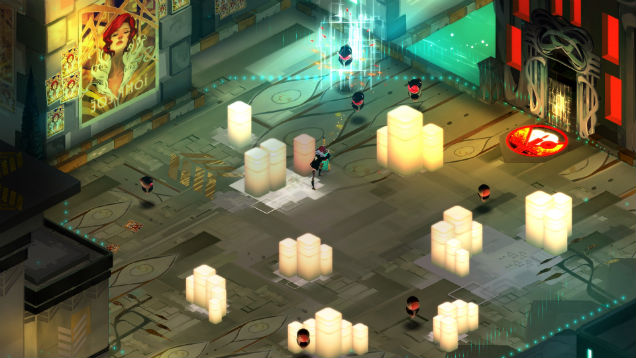
“Maybe I should stop playing with so many limiters,” I wrote to him, referring to a set of modules you unlock that increase the difficulty of the combat in various ways and its ensuing rewards.
“Dude why are you using those!!” he responded. “No wonder!”
Part of me wanted to take all the process limiters away, to make the rest of Transistor a walk in the park so I could spend the weekend enjoying the all-too rare glimpse of the sun we had in New York City. But I couldn’t bring myself to. As I acquired more limiters, I would lay them on top of the ones I already had. This wasn’t to punish or prove anything to myself. I kept making the game harder, I eventually realised, because I didn’t want it to end.
It’s nice when a game is beautiful, which Transistor is. It’s even better when its story is moving and gracefully presented as well, which Transistor’s is. But I always know it’s a sign of something special when a game is so much fun that just playing through its practice rounds and time trials feels like a treat. Those are the levels I started playing the moment I’d finished Pikmin 3, the stages I worked towards eagerly when I wasn’t ready to be done with Super Mario 3D World, the ones I’m still playing in Gears of War 3 for some compulsive reason.
Transistor is a smaller, more tightly framed experience than any of those games. But its diminutive stature just makes it feel like more of a triumph considering the league in which I’d place it. Pikmin is a great point of comparison, actually, because like that Nintendo classic, Transistor creates a riff on an established genre that feels so novel it risks becoming eccentric, even off-putting for new players.
For Pikmin, that’s real-time strategy. Transistor takes on a far more peculiar beast: the action role-playing game. I don’t really know what that mouthful means at this point, but the way Supergiant handles the hybrid genre is far more interesting, and far more rewarding, than Bastion ever was.
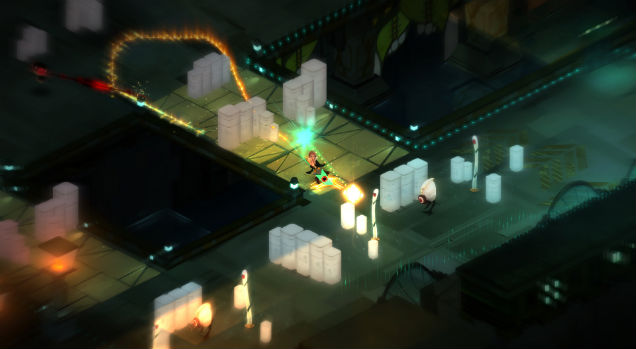
I want to focus on the combat here because, again, I’m scared that curious gamers might be dissuaded by obtuse jargon or vague promises if I just say that Transistor combines elements of real-time action RPG gameplay with tactical turn-based maneuvers. It does do that, and it does so expertly. But it’s also a rare example of a game that picks and chooses motifs from other titles to make something that feels wholly new.
The majority of Transistor’s gameplay is split into two parts. There’s the real-time portion where you’re running around a dystopic science fiction city known as Cloudbank. It’s a desolate place that reminds of what I loved about the original BioShock — a haunting, roomy space that hums with mystery of the regrets of people who once lived there, and the unhealthy obsessions of those who still do. I don’t want to delve into the story because Transistor spins a thread that’s difficult to pull on without disassembling the whole thing. So I’ll just say that before everything went down in Cloudbank, Red was a famous singer. The game begins with her, now without a voice, pulling a giant talking sword (the eponymous transistor, voiced by Bastion narrator Logan Cunningham) out of a man’s chest and trying to figure out what exactly went wrong.
Before long, Red is beset on all sides by killer robots. This is where the second part of Transistor’s gameplay comes in, the so-called “planning mode.” With the tap of a button (R2 for the PS4), you enter into a stasis that feels like it was pulled straight out of XCOM: Enemy Unknown down to the level of the thin, militaristic reticles that plot out your moves. You have a finite amount of energy that can be used to walk around the map, attack bad guys, or use other abilities.
As with many turn-based games, you can revise your plan up until the point that you execute it. Once you do, there’s no turning back. With another press of the button, time revs up and Red whips around the map at a blinding speed. Her enemies do their best to react.
Here’s a video showing how I slowly (but surely!) wrapped my head around using the planning mode to its full effect in one of the game’s challenge levels. You can almost hear the gears turning in my head as I get closer and closer to connecting the dots:
Your enemies aren’t this patient in the main game, however. They meet your advances with a calculated efficiency, which is where things start to get really interesting. Because unlike a game like XCOM or any number of turn-based RPGs that I’ve played recently, the bad guys in Transistor aren’t content to just sit around and let you pummel them for a full “turn.” Once you give Red the green light, they begin whipping around the map as well.
At first this is just irritating, like swatting away small flies. But pretty soon, even the smallest hiccup in your plan leads to serious problems. There’s a cool-down period between Red’s turns, during which she’s much slower and weaker than most opponents. Some abilities can be used before you fully recharge, but for the most part you spend this time running to cover and trying to avoid hostile projectiles as best you can.
All of this creates a diverse set of challenges. I found the wraith-like enemy class known as “Young Lady” to be particularly tricky, for instance, because she has this infuriating ability to teleport instantaneously when you land your first blow. With most enemies, you can chart a rough trajectory and aim your attacks accordingly. But the Young Lady still manages to take my by surprise well into the new game plus mode.
Take this moment I started to capture because I was trying to get a good clip of guiding Red gracefully to victory. There were only a few bad guys left, I thought. This won’t be that hard.
Well, here’s how it turned out:
The end of that clip shows one of my favourite parts of Transistor’s combat. Rather than just letting you die outright, the game devises a far more clever punishment: each time your health is completely drained, you lose one of your abilities. You can’t get it back until you’ve survived another fight or two either.
What I love about this isn’t that the combat is invigorating, or even that its distinctive combination of real-time and, er, not real-time motions captures both the nail-biting tension of XCOM and the hedonistic joy of running around and breaking things in a game like Diablo III. It’s the way that Transistor is constantly pushing you to think on your feet, to master any new plan of attack no matter how limited your repertoire, or how crazily desperate your actions might be.
The enemies evolve in turn. Roving drone-like bots with cameras mounted on their heads start out by splattering a large picture of Red on the screen to distract you, but by the end of the game they’re creating a fog of war that blocks your entire field of vision of planning mode. Others spawn fungal-like material on the ground or lay down force fields that pull you out of planning mode entirely. The process limiters that you’re handed as you level up exaggerate these subtle shifts by, say, making enemies more powerful, limiting the available space you have to equip abilities, or extending cool-down period.
The reason I liked playing Transistor with all of these enabled is because the increased challenge encouraged me to use every one of Red’s powers to the best of her abilities — and mine. By the time I put down my DualShock 4 to write this review, I’d unlocked 16 powers. These range from a number of different ranged, melee, and area-damaging attacks to others that let you warp a few feet in any direction (Jaunt) or convert your enemies temporarily (Switch). You can only use four of these as attack moves at any given time, which can be assigned to slots that match to each of the controller’s symbol-faced buttons. The remainder can be slotted in below your attack moves as upgrades or assigned to Red as passive abilities.
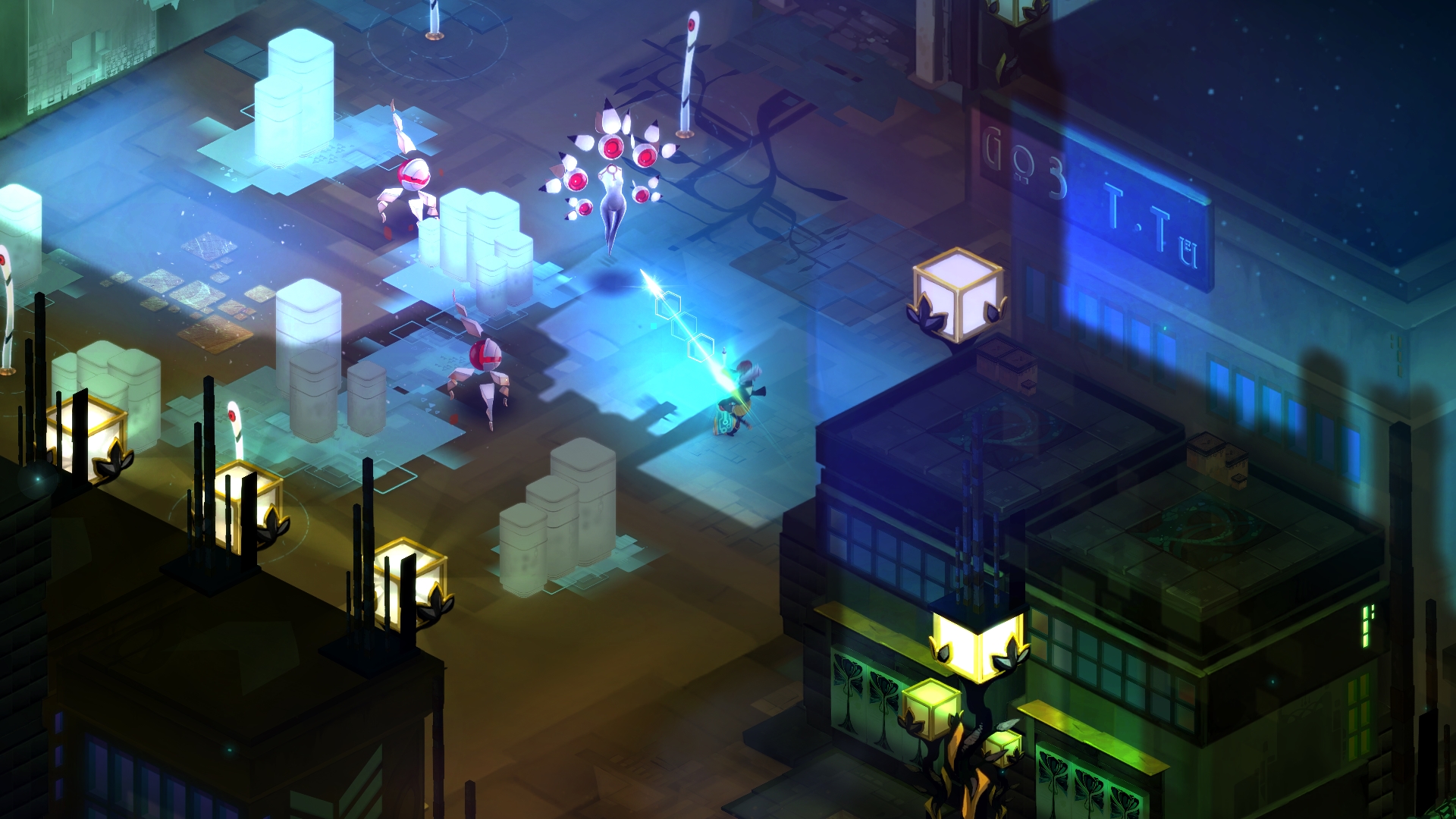
Transistor doesn’t do much to teach how all of this works. But that makes the process of discovering it yourself all the better. It’s a cyberpunk fiction about hacking into an overarching malicious IT superstructure, after all. Learning how to manipulate the system to work in your favour is part of the fun. Fairly early on, I learned that upgrading Jaunt with Switch made the time between my plans a recklessly delightful gamble of lunging towards a group of enemies only to see them turn on themselves a moment later. Upgrading a ricocheting projectile (Bounce) with a damage amplifier (Void) and scattershot attack (Spark) turned it into an enormously powerful explosive like the banana bombs from Worms Armageddon.
And that’s not even getting into using different abilities in sequence. I didn’t appreciate how powerful a slow-moving ball of energy (Flood) was until I figured out I could use another lassoing ability (Get) to pull enemies into its path — something I only realised when I was so low on available powers I picked those two out of sheer necessity.
The endless combining and experimenting only gets deeper from there. As your plans become more complex and attenuated, actually managing to pull them off feels better and better in turn. The first time I used Load to deposit a bomb in the center of a group of bad guys, Jaunt-ed away to escape its blast radius, and then shot the thing to detonate it felt like I’d just lived through the entire plot of some epic spy movie in the span of a few seconds.
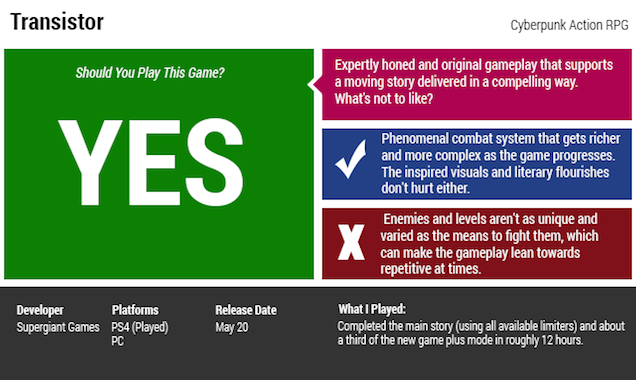
This all may sound dry and mechanical. And Transistor is one of those games that asks you to meet its challenges as if you’re staring down a giant spreadsheet. But your mastery over the transistor’s abilities mirrors Red’s growing attachment with the voice embedded within it in a profound way. You slowly start to learn about the history between these two, the love they once shared and wish they could again.
In the moments when Red first plunges into her planning stasis, everything gets eerily quiet for a fleeting moment. Then her voices rises up with a deep, rich timbre. She’s not singing, only humming, but it’s beautiful all the same. This is where she can still come to life, I thought the first time this happened. This is where she still holds some power.
Was there any doubt, then, that once I’d finished Transistor I would do anything other than start it all over again? I want to go back to the practice room and test out my new stealth power, I told myself.
I’d fallen in love with the sword too.
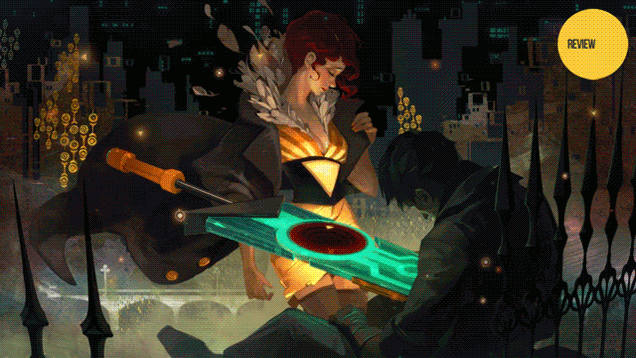
Comments
3 responses to “Transistor: The Kotaku Review”
Great review, game looks great, can’t wait to play it! Anyone know how it goes on PC?
It plays great on PC; all you really use is the mouse and 1234.
At first it sounded like the combat was like Rondo Of Swords, but the review makes it sound more like Frozen Synapse which piques my interest even more. I think I’m going to have to get this game, even though I’ve heard some people say it gets a bit old at the end, but stops early enough to avoid gameplay fatigue.
Want it. No..no. Need it.